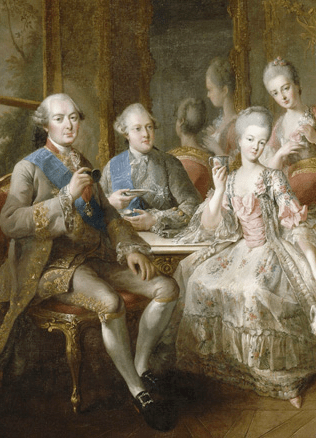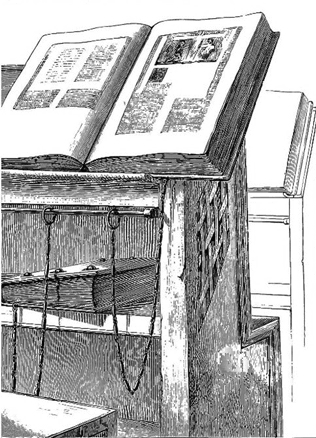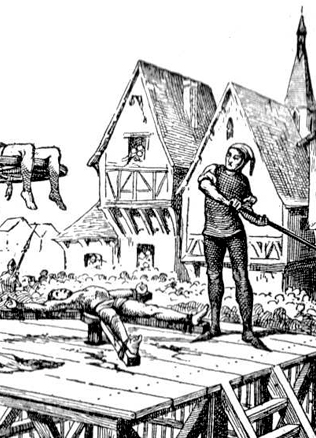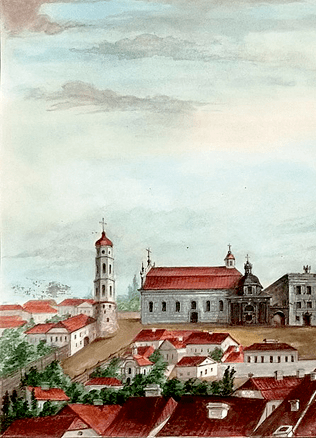Visits of Lithuanian Rulers to Vilnius until the Middle of the 17th Century
Itineraries (the travel routes of rulers) provide information about special aspects concerning the ruling system of a state, the importance of separate holdings, the functioning of assistance, the system of expenditures, and helps to become better acquainted with the organisation of the royal house, communication system, and road network. There is a clear link between the visits of rulers and prosperity of a residence that was visited. This is important when we speak about the GDL capital of Vilnius. Until the turn of the 15th century, the visits of Lithuanian rulers to Vilnius meant the city turned into an important political centre, and strengthened the case for one capital. After the Union of Lublin with the creation of two centres in the Commonwealth, Vilnius and Cracow (later on this being passed to Warsaw), the visit of a royal in Vilnius meant a return to having political and cultural weight, and the confirmation of the GDL as an independent state. It was only when the ruler came with his retinue that the city became a true capital, the political and cultural centre of Lithuania. The investment allocated to the building, upkeep or rebuilding of the castles in Vilnius was determined by the rulers’ focus on Lithuania, their desire to visit the capital of Vilnius, comply with constitutional provisions, and their desire to rest or be entertained there.
Travelling Rulers
Władysław II Jagiełło, who was the first joint ruler of the Kingdom of Poland and the GDL (who ruled the GDL from 1382-1392), was the quintessential medieval ruler who travelled much. He tried to make regular visits to the state centres. During his almost 25 years of rule, he did provide any special focus on Krakow. He visited it only for about 13 days a year on average. The position of Krakow as a residence was validated not by the king, but by the guests of the queens and their retinue. When relations normalised with Vytautas, a tradition developed whereby Jagiełło went to Vilnius, Grodno or Trakai during Christmas and spent the holidays there. He visited Vilnius at least 25 times, generally in early winter; he would stay there from one day to a few months. The size of his entourage for these trips oscillated between less than 20 up to 100 people; foreign guests also came with the king. All of these made the life of Vilnius and its castles much livelier.
Do You Know?
As was normal for medieval rulers, Lithuania Grand Duke Vytautas (who ruled from 1392-1430) regularly visited the most important centres of the state: on average he would travel around 35 kilometres a day.
Lithuanian Grand Duke Vytautas (who ruled 1392-1430) was mobile, travelling on average 35 kilometres per day. He visited Vilnius approximately 2 times a year, most often in January. In the winter, he tried to spend time in one of the two capitals – either Vilnius or Trakai. A growing trend for Vilnius to be the more important capital was seen in 1430-1432 under Lithuanian Grand Duke Švitrigaila’s rule. He visited Vilnius 8 times in that period.
The Jagiellon capital
The case for Vilnius as the GDL capital was consolidated by King of Poland Casimir Jagiellon (ruled 1440-1492). Vilnius became a place often visited by his children and his court. When Casimir Jagiellon’s son Casimir came to Vilnius in 1479, became famous for his faith and austere lifestyle, and lived there until his death in 1484. The devoutness of this young prince and the tragic end of his life turned into the Cult of Casimir. According to historian Edvardas Gudavičius, “the Jagiellonian dynasty took on a beatified member of their family, and Lithuania became the centre of his cult and pillar.”
The favourite place of Alexander Jagiellon (who ruled 1492-1506) was also Vilnius, though he also liked Grodno, and later Krakow. He resided in Vilnius 41 days a year on average. The defensive wall of city (1503) and construction in the territory of the Lower Castle greatly influenced Alexander Jagiellon’s concerns. Both capitals (Vilnius in the GDL and Krakow of the Kingdom of Poland) became the cities visited most often and for the longest periods of time by Sigismund Augustus (who ruled 1506-1548). He visited Vilnius more during the first half of his rule. Sigismund Augustus lived with his family and court in Vilnius for a long time: 1513-1515, 1516-1517, 1528-1529, 1533-1535, and 1540-1542. He contributed to the construction of the royal palace in the Lower Castle.
Love of the city and the woman
The last Jagiellon, Sigismund Augustus (1544-1572) set himself apart with his great love for Lithuania’s capital.
He visited the city already as a child, and at nine years of age was elevated to the title of the Grand Duke in Vilnius. In 1544 he began the reconstruction of the Lower Castle Palace. Sigismund Augustus came for a longer period from Poland in the summer of 1551, having chosen Vilnius for the eternal resting place of his second wife Barbara Radziwiłł. Sigismund Augustus gave prominence to the northern capital in Lithuania first and foremost until 1566, which was a different stance than that of his father Sigismund the Old, who had also felt a strong tie to the Lithuanian cradle of the family dynasty, but who considered the Piast Castle as his home. Until 1555, Sigismund Augustus spent almost 51% of his time there, in 1556-1558 he spent 68.5% of his time there, and in 1559-1562 he spent 81% of his time in Lithuania. During the last period of his life, he spent most of his time in Vilnius. His affection for Vilnius was noted by his contemporaries. His secretary Mikołaj Trzebuchowski wrote in 1563 that “no one can take us away from Vilnius.”
His body in Warsaw, and his heart in Vilnius
The new capital of the Republic of Two Nations, united by a union, became Warsaw. It was there starting in 1569 they began to rebuilt the king’s palace, and have joint Sejms. It was where monarchs resided and the place that was visited by foreign delegations. At the end of the 16th century, Vilnius still kept its status as the official capital of Lithuania, but it was threatened by becoming a province of the unified state. It was only thanks to the political struggle of the Lithuanian ruling elite, as crowned royalty came for shorter or longer residing periods to Vilnius, which made the city the de facto capital of Lithuania for a time. One of the first elected rulers who visited the Lithuanian capital was Stephen Báthory (who ruled from 1576-1586). From the members of the Vasa dynasty that ruled from end of the 16th century to the second half of the 17th century, it was Sigismund III Vasa (who ruled from 1587 to 1632) and Władysław Vasa (1632-1648) that visited Vilnius the most. By not keeping to the constitution, which stipulated that the ruler must visit Lithuania every three years, Władysław Vasa visited Vilnius and resided there much more often. It is no accident that his body was buried in the Vasa Chapel in Krakow on January 15th, 1649, while an urn with his heart was placed in Vilnius Cathedral. This decision by the deceased for the preservation of his remains shows his strong tie with the Lithuanian capital. In total he spent eight years in Lithuania, with three of those coming in Vilnius. This was heavily influential on the investments that were made for Vilnius’ Lower Castle and the Cathedral.
A capital without a throne
Starting in the mid-17th century, visits by Commonwealth rulers to the capital waned.
Out of the six Commonwealth monarchs between 1648 and 1795, only three of them visited Vilnius.
The last of the Vasas, Jan II Kazimierz (who ruled 1648-1668) came to Vilnius in 1661 and 1664. During the final time he visited the city, together with his wife Ludwika Maria Gonzaga, he was welcomed in a stately manner. On May 15th he was met beyond the city limits by senators, university and magistracy members, and was brought in a celebratory manner through the decorated Rūdninkų Gate. Jan III Sobieski (who ruled from 1674 to 1696) was met in the Lithuanian capital with even more fanfare in 1688, as was Augustus II the Strong (who ruled from 1733 to 1763) in 1699. However the arrivals of rulers became rare, and this had a negative effect on the development of Vilnius, and the state of the royal residence (the castle). Neither Jan III Sobieski nor August II the Strong visited the crumbling residence.
Literature: R. Ragauskienė, LDK valdovų vilnietiški itinerariumai, Vilniaus Žemutinė pilis XIV a.–XIX a. pradžioje. 2002–2004 m. istorinių šaltinių paieškos, sud. R. Ragauskienė, Vilnius, 2006, p. 304–330.
Raimonda Ragauskienė



